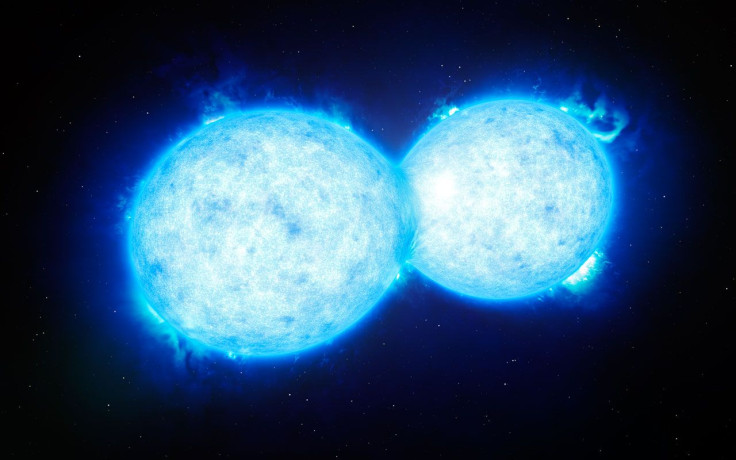Binary Stars To Merge, Explode In 2022, First Of Its Kind Scientific Prediction Says

If a first of its kind scientific prediction turns out to be right, not just astronomers but everyone on Earth will be able to witness an unusual and fascinating celestial event about five years from now, without the use of any scientific instruments.
The prediction? Two stars, which are actually a contact binary (two stars that orbit each other, and also share a common atmosphere), about 1,800 light-years away in the Cygnus constellation, will merge and explode around 2022, and the event, which will lead to the formation of a red nova, will be visible to the naked eye when it occurs.
Lawrence Molnar, professor at Calvin College in Grand Rapids, Michigan, his students, and colleagues from Apache Point Observatory (APO), New Mexico, and the University of Wyoming, announced their prediction Friday at the ongoing 229th meeting of the American Astronomical Society in Grapevine, Texas.
“It’s a one-in-a-million chance that you can predict an explosion. It’s never been done before,” Molnar said in a statement Friday.
Called KIC 9832227, the binary pair has been observed for long but it was only in 2013 that a study of the changes in its brightness by Karen Kinemuchi of APO got Molnar’s attention. His research assistant Daniel Van Noord studied the brightness data, confirming it was a binary and discovering that it was a contact binary. He also found the orbital period of the binary was becoming shorter, which could happen because the two stars were getting closer to each other.
Molnar and his team correlated this data with an incident from 2008, in which a contact binary (V1309 Scorpii) with an orbital period that was decreasing at an accelerating pace produced a red nova. And to be even surer about their prediction, they also performed two other observational tests to rule out possible misinterpretation of data.
“Bottom line is we really think our merging star hypothesis should be taken seriously right now and we should be using the next few years to study this intensely so that if it does blow up we will know what led to that explosion,” Molnar said.
After the merger and explosion, the resultant red nova star will appear in a previously dark spot of the sky and be visible as part of the constellation Cygnus, in the recognizable Northern Cross star pattern.
“The project is significant not only because of the scientific results, but also because it is likely to capture the imagination of people on the street. If the prediction is correct, then for the first time in history, parents will be able to point to a dark spot in the sky and say, ‘Watch, kids, there’s a star hiding in there, but soon it’s going to light up.’,” Matt Walhout, dean for research and scholarship at Calvin College, said in the statement.
© Copyright IBTimes 2025. All rights reserved.




















